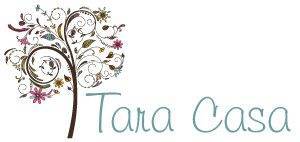A mosaic is a piece of art or image made from the assemblage of small pieces of coloured glass, stone, or other materials.
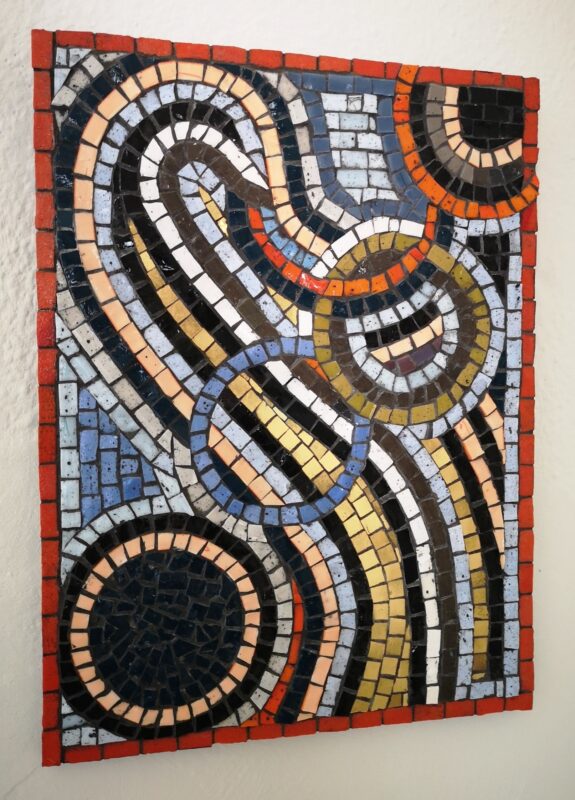
It is often used in decorative art or as interior decoration. Most mosaics are made of small, flat, roughly square, pieces of stone or glass of different colours, known as tesserae. Some, especially floor mosaics, are made of small rounded pieces of stone, and called “pebble mosaics”.
Mosaics have a long history, starting in Mesopotamia in the 3rd millennium BC. Pebble mosaics were made in Greece mosaics with patterns and pictures became widespread in classical times, both in Ancient Greece and Ancient Rome.
Mosaic art continued to flourish in Roman times. There are many sites in Europe today that still have examples of mosaic floors from Roman times. This is a testament to the durability of the material and the art. Romans also used decorative mosaics for walls, fountains and more. Smaller tesserae, (Small stones and glass), more colors and more shades were also introduced during this period. The Romans continued with the same general design and subject matter of the Greeks. They did some basic figural work but it wasn’t until the rise of Christianity that figural wall mosaics really became popular.
Mosaic art flourished in the Byzantine Empire from the 6th to the 15th centuries; that tradition was adopted by the Norman Kingdom of Sicily in the 12th century, by the eastern-influenced Republic of Venice, and also in the Ukraine.
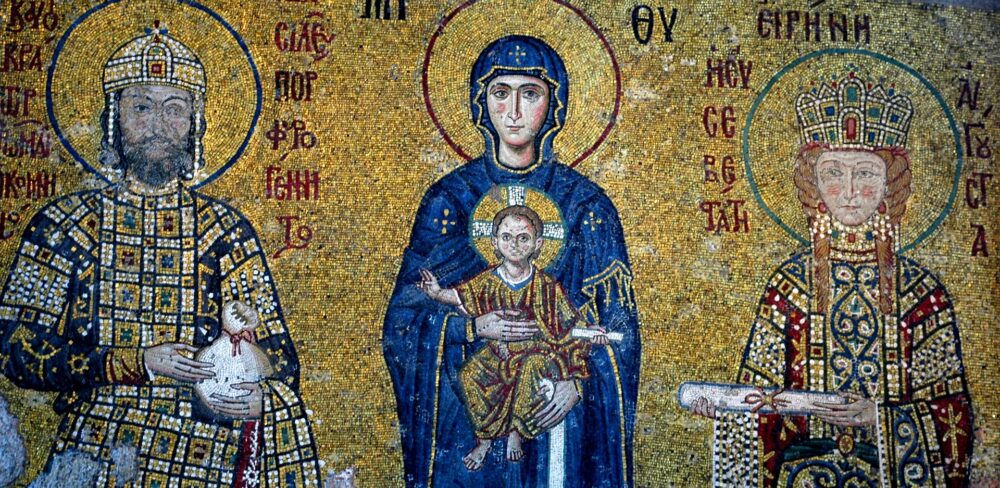
Mosaic fell out of fashion in the Renaissance, though artists like Raphael continued to practise the old technique. Roman and Byzantine influence led Jewish artists to decorate 5th and 6th century synagogues in the Middle East with floor mosaics.Mosaic was widely used on religious buildings and palaces in early Islamic art, including Islam’s first great religious building, the Dome of the Rock in Jerusalem, and the Umayyad Mosque in Damascus. Mosaic went out of fashion in the Islamic world after the 8th century.…………
Modern Mosaics
Modern mosaics are made by professional artists, street artists, and as a popular craft. Many materials other than traditional stone and ceramic tesserae may be employed, including shells, glass and beads.
Mosaic is in a healthy state in the early 21st century. The field is rich with new ideas and approaches, and organizations such as The Society of American Mosaic Artists exist to promote mosaic. The worldwide web gives access to a great many artists working in this medium. Mosaics have developed into a popular craft and art, and are not limited to professionals. Today’s artisans and crafters work with stone, ceramics, shells, art glass, mirror, beads, and even odd items like doll parts, pearls, or photographs. While ancient mosaics tended to be architectural, modern mosaics are found covering everything from park benches and flower pots to guitars and bicycles. Items can be as small as an earring or as large as a house. Today mosaics are still a popular art form. They are used in kitchen glass tile mosaic backsplashes, craft projects, garden art, as fine art, sculpture, park benches and also in public art. With mosaics you can create beautiful art work that is durable and low maintenance.
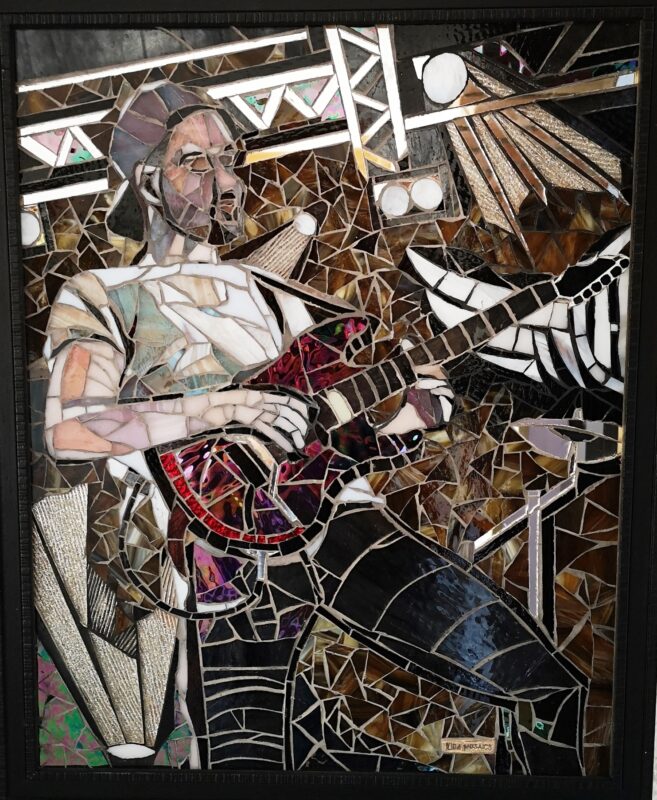
Antoni Gaudi (1852-1926) is most famous for La Sagrada Familia , (Roman Catholic church in Barcelona), and for the mosaic work in Parc Güell, (A public park system composed of gardens and architectonic elements located on Carmel Hill), in Barcelona, Spain. The park, designed by Gaudi and built between 1900 and 1914, contains long, winding rows of tile-covered benches surrounding a large dirt courtyard.

A mosaic dragon greets you at the bottom of the steps when you arrive. Gaudi, a man of faith, a great observer of nature, a brilliant architect, has become a universal figure of modern architecture: his contribution to this discipline entailed a break of established patterns, both in mosaics, form and in systems constructive and structural of its buildings, the result of a unique, unprecedented methodology.
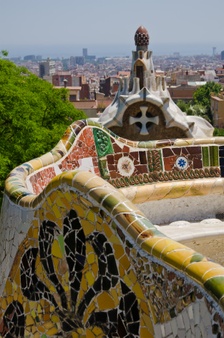
The Two Main Methods
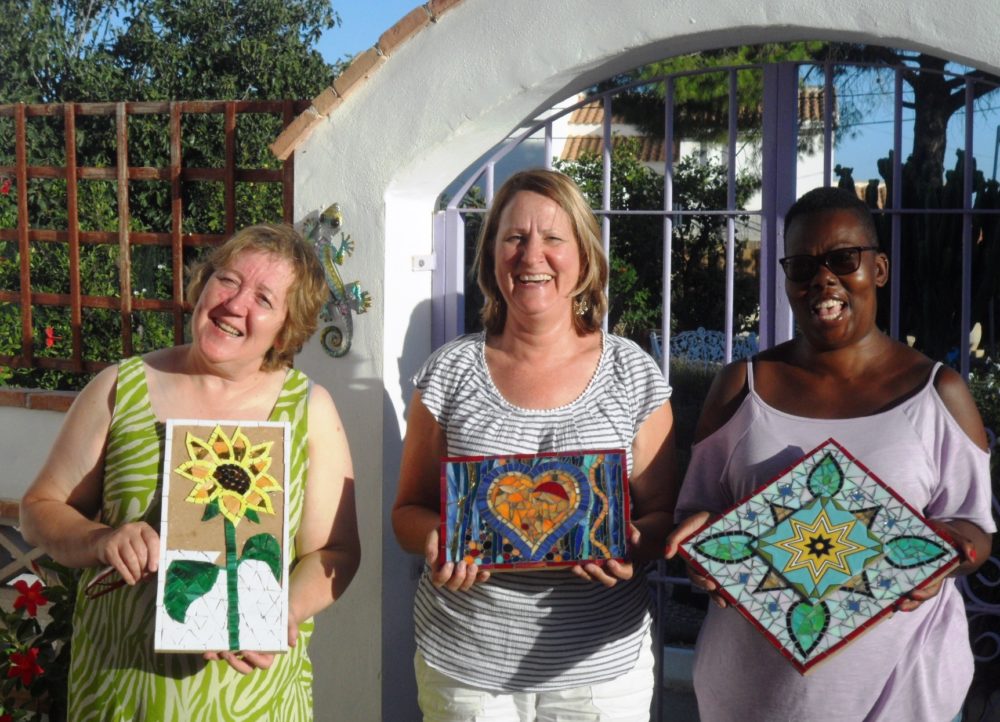
Direct Method
The direct method of mosaic construction involves directly placing (gluing) the individual tesserae onto the supporting surface. This method is well suited to surfaces that have a three-dimensional quality, such as vases. This was used for the historic European wall and ceiling mosaics, following underdrawings of the main outlines on the wall below, which are often revealed again when the mosaic falls away.
The direct method suits small projects that are transportable. Another advantage of the direct method is that the resulting mosaic is progressively visible, allowing for any adjustments to tile colour or placement.
The disadvantage of the direct method is that the artist must work directly at the chosen surface, which is often not practical for long periods of time, especially for large-scale projects. Also, it is difficult to control the evenness of the finished surface. This is of particular importance when creating a functional surface such as a floor or a table top.
A modern version of the direct method, sometimes called “double direct,” is to work directly onto fiberglass mesh. The mosaic can then be constructed with the design visible on the surface and transported to its final location. Large work can be done in this way, with the mosaic being cut up for shipping and then reassembled for installation. It enables the artist to work in comfort in a studio rather than at the site of installation.
Indirect method
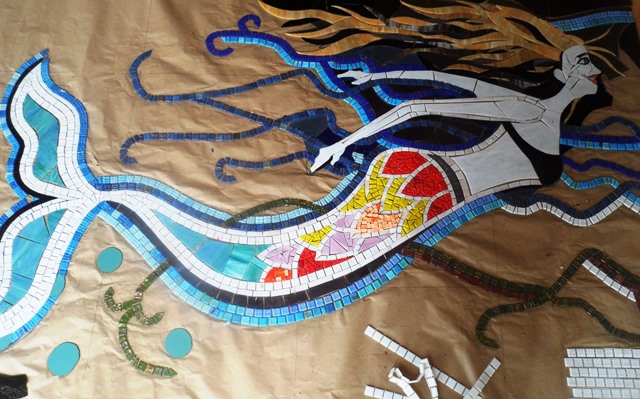
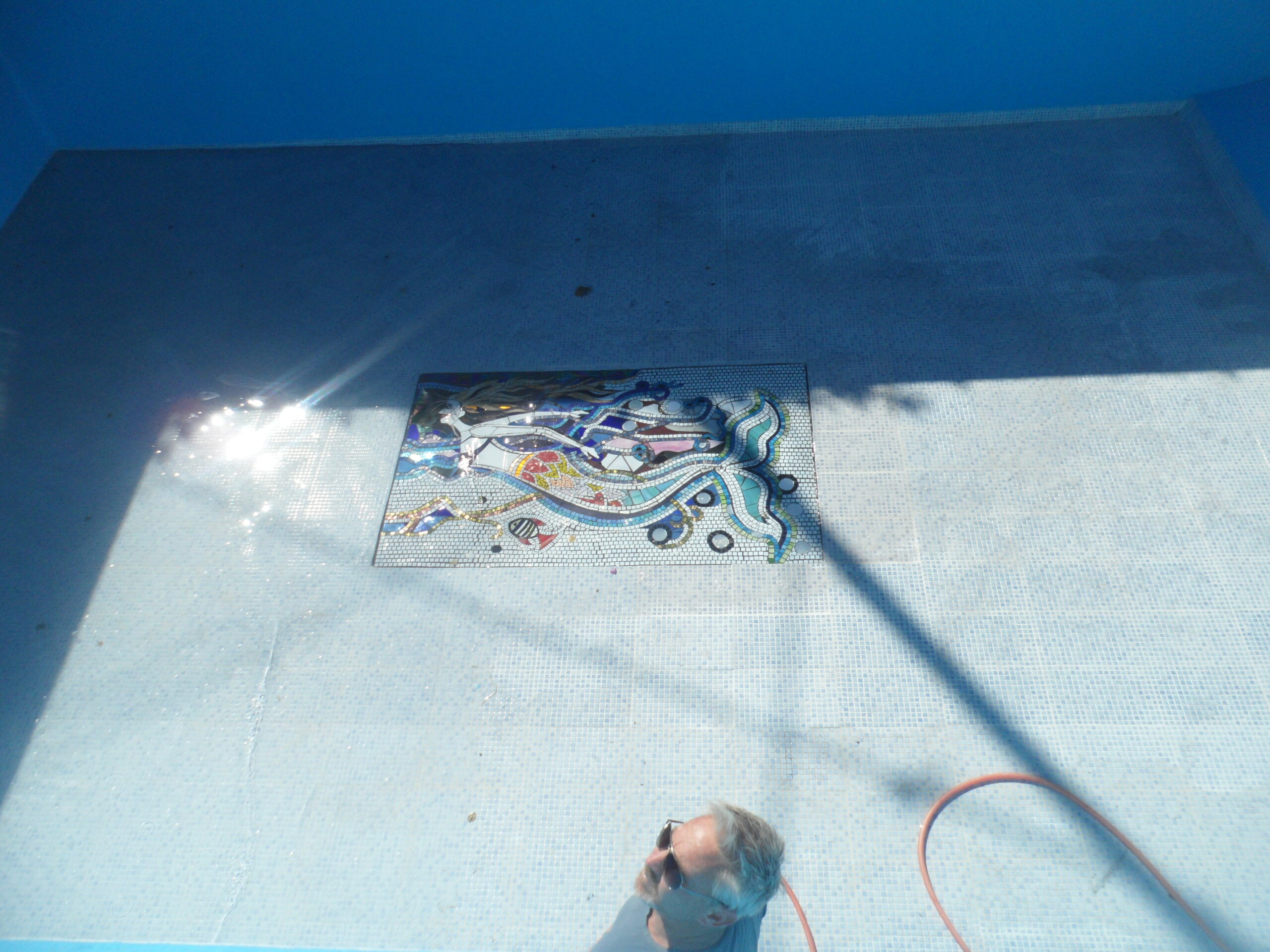
The indirect method of applying tesserae is often used for very large projects, projects with repetitive elements or for areas needing site specific shapes. Tiles are applied face-down to a backing paper using an adhesive, and later transferred onto walls, floors or craft projects. This method is most useful for extremely large projects as it gives the maker time to rework areas, allows the cementing of the tiles to the backing panel to be carried out quickly in one operation and helps ensure that the front surfaces of the mosaic tiles and mosaic pieces are flat and in the same plane on the front, even when using tiles and pieces of differing thicknesses. Mosaic murals, benches and tabletops are some of the items usually made using the indirect method, as it results in a smoother and more even surface.
